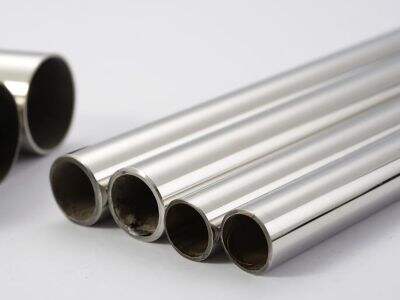An incredibly strong & useful metal, stainless steel is so versatile it can be easily found in buildings, kitchens, and factories. This metal is durable because it doesn't easily rust or stain, and it withstands the test of time without getting damaged. For these reasons, a majority of individuals opt for stainless-steel over other metals. EPAINOX Freshwater stainless steel comes in two forms, sheets and coils. In this article we are going to explore these 2 forms more in depth to cover their differences and how to choose the form that fits better with the usage.
What are SS sheets and coils?
A stainless steel sheet is Flat Metal which is less than 6mm. Copper cosmetics sheets are made by rolling metal into extremely thin sheets and cutting them to fit. A sheet is similar to a big pancake of metal! Stainless steel coils are long sheets of rolled stainless steel into spiral form. At the same time, these coils can be cut into sizes as per requirement. Coils make handling and transporting large quantities easier, and are often used for mass production of a wide variety of products.
There are many types of Stainless Steel Pipe that have their unique components. The most common types of stainless steel are known as 304, 316 and 430. Each of these types has different chemicals blended into them, which enables them to perform better in certain tasks. Some types might be more appropriate for kitchen and others for construction.
Both Positive and Negative Aspects of Stainless Steel Sheets and Coils
The stainless steel sheets and coils have their pros and cons. Let’s start with sheets. Stainless steel sheets are highly flexible, and this is probably one of their best features. That allows them to be sliced into any shape or size that is required, which makes them valuable for various uses. Stainless Steel Railing also work well for areas where space is tight, such as in close installations. The only drawback about sheets is that they're more expensive when you need a larger amount. Large sheets can be cumbersome; they may require special tools to work with them correctly.
Now, let’s talk about coils. It is a very efficient format, allowing multiple pieces to be produced simultaneously. Because they can be trimmed to the required length, they save material and, thus, reduce waste. This makes them great for massive manufacturing operations. If you have a smaller project, coils are probably not your most optimum way to go, as these could be prohibitively expensive to process correctly with machines.
Which is Better for Building?
Stainless steel sheets and coils are also both commonly used in the construction industry for applications such as walls, roofs, and other structures. Whether a builder uses sheets or coils depends on what the builder wants in terms of design and texture, as well as cost.
Stainless steel sheet– is a common choice for when an otherwise flat surface is needed. These sheets are also available in several finishes such as shiny, brushed, or textured. They can be pre-cut to the correct size prior to installation, which speeds up the building process and can also contribute to cost saving. On the contrary, coils are more effective if the building has curved surfaces. Coils of wire are often easily bent into many shapes and angles, making it great for custom or creative designs.
Selecting for a Business Kitchen
Stainless steel is the best metal to use in commercial kitchens; it is clean, does not rust, and is easy to wash. Considerations for Choosing Stainless Steel Sheets vs. Coils in a Kitchen.
Stainless steel sheets are commonly used for countertops, kitchen surfaces, and backsplashes. They are easily customizable to exact dimensions and textures, allowing them to be used in a wide variety of applications. They are also very simple to clean and maintain, which is very important for food prep and sanitation.
Hoods made of coils and can also be molded in different designs, so they are frequently used for a commercial kitchen hood. Also, coils can be covered with heat-resistant materials, as this works well in areas that need to cope with high heat, such as above the stove and oven.
Comparing Cost and Strength
The quality and price of stainless steel sheets and coils vary depending on the metal type and processing level required. Considering the way stainless steel sheets are cut from coils, the former is relatively expensive compared to coils, which is due to the secondary processes required to turn them flat and smooth. Still, sheets may last longer than coils in some cases, as their surfaces tend to show less wear over time.
On the other hand,stainless steel pipe handrail are often more affordable as they require less processing than sheets. On the flip side, coils may wear out faster. Coils can be coated or laminated with other materials to increase their lifespan. Coils are also preferred for more industrial-style architecture as they enable the manufacturer to produce hundreds of pieces in a way that is significantly more cost-effective than manufacturing each part from sheets. When high-quality designs and finishes are paramount, sheets will always produce better results as individual heating and cooling of sheets leads to less distortion than coils.
Conclusion
To sum up, there are two types of metal; stainless steel sheets and coils both have unique properties. We use both in businesses and buildings depending on the application. EPAINOX focuses on providing high quality stainless steel sheets and coils for the customers. Knowing the difference between sheets and coils can help you choose the right metal for your industrial, commercial, or architectural project.

